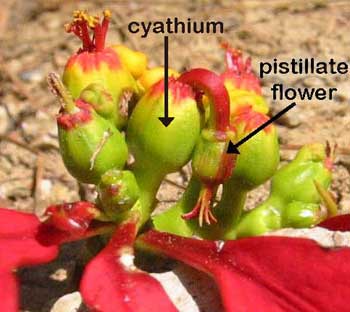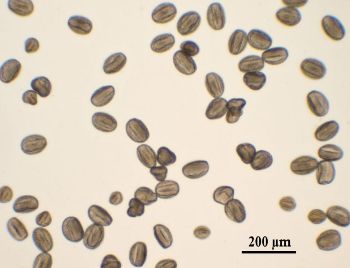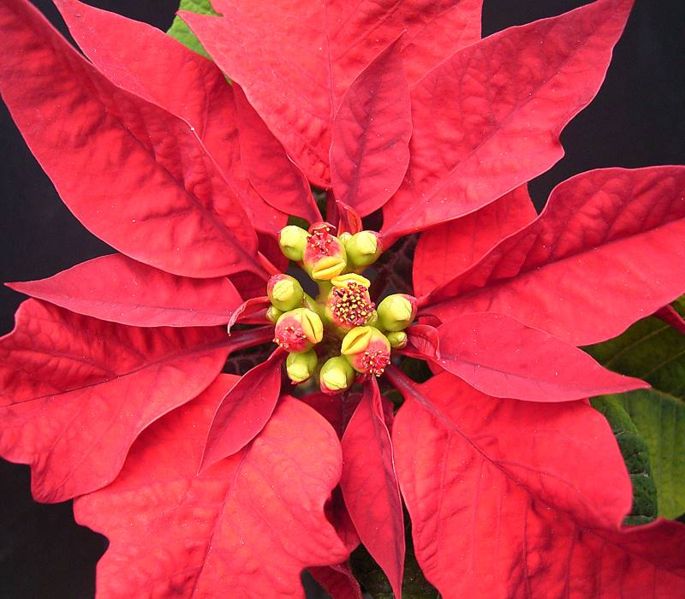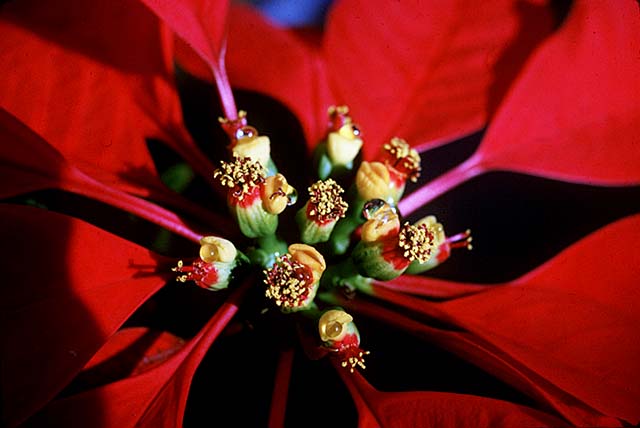Reproduction
The poinsettia is a monoecious plant, meaning both male and female reproductive organs can be found on the same individual. Simply put, it is a hermaphrodite. A complete flower, known as a cyathium, consists of five sperm/pollen-producing stamen (male flowers) surrounding a single pistillate (female flower) which contains the ovary and egg. Although the female flower is attached to the cyathium, it generally sits upon a stem-like structure called a pedicel which pushes the pistillate up and out the cyathium to be pollinated. These structures are extremely simplified, most obviously in the fact that they lack the petals we normally associate with a flower. The photographs below shows a poinsettia's cyathium with an emerged female flower as well as a microscopic view of Euphorbia pulcherrima's pollen.


As mentioned before, poinsettias are hermaphroditic. Although a single flower has the ability to reproduce by itself, more often the plant cross pollinates via pollinators such as birds and insects who are attracted to the poinsettia because of the large, red bracts. They obtain one poinsettia's pollen while feeding on that plant and transports it to other poinsettias it feeds on thereafter. This pollen will fertilize the female flower by entering the stigma and travelling down the tube-like style which leads to the ovary housing the egg. The pistillate being lifted outside the cyathium greatly increases the likelihood this type of fertilization which is beneficial to Euphorbia pulcherrima as a species because is provides genetic variation between plants. A similar process would occur if a poinsettia plant was to pollinate itself. In this case however, the stamen from the same flower would also have emerged from within the cyathium and pollen from these males (on the same plant as the female flower) would fertilize the egg (see image below). Reproduction would theoretically be just as successful, however there will be little to no genetic variation between the original and new plants.
After either fertilization, the developing zygote gains nutrition from the endosperm which is also found within the ovary. The endosperm is a starchy tissue that results when two pollen fertilize a polar body (an unusable "egg" produced by meiosis). The fruit that develops as the seed matures is known as a schizocarp or schizocarp capsule. When fully mature, the schizocarp will explode open and release the internal seeds into the environment where they can (under appropriate conditions) begin to blossom into new poinsettia plants.
Website Created by Christine Vick
March/April 2009
Questions? Comments? Email me at vick.chri@students.uwlax.edu


